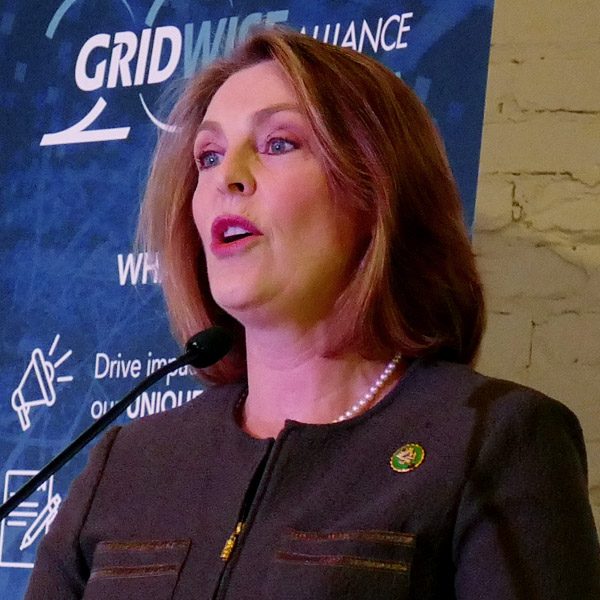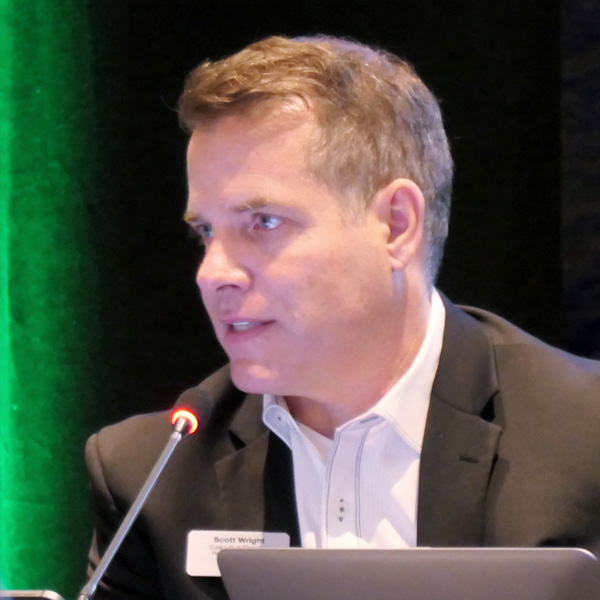SPP met a major milestone in its Western efforts Dec. 7 when the Markets+ Participants Executive Committee (MPEC) approved the day-ahead market’s proposed governing document, a key step as the grid operator moves quickly to file a tariff with FERC in early 2024.
The MPEC voted 73% in favor of the document, the product of a half-year of work by the committee to be incorporated into the tariff. Stakeholders approved a large portion of the Markets+ draft tariff language last month at an in-person meeting in Tempe, Ariz. (See Stakeholders Approve Bulk of SPP’s Markets+ Tariff.)
The proposal now advances to the Interim Markets+ Independent Panel (IMIP), which is expected to vote on it Dec. 19.
Markets+ rules require the MPEC to pass any measures with a supermajority of 67% of voting members. The bulk of the votes against the governance plan came from representatives of the “Independents” sector dissatisfied with the proposed voting structure for their group once the market goes live.
The document spells out governance structure and functions for Markets+, including the makeup and roles of the SPP Board of Directors, permanent MIP, MPEC, Markets+ State Committee and other standing committees; the MIP election process; meeting policies; the voting process for market policies; and process for appealing decisions. It also covers the establishment of working groups and task forces, the role of SPP staff in relation to the market, and attendance and proxy voting policies.
The Dec. 7 vote was preceded by the MPEC’s approval of a handful of amendments to the governing document, including:
-
- An SPP staff proposal that market participants be assigned to geographical regions to enable the MIP to understand the geographical breakdown of MPEC votes for “informational” before voting on issues advanced to the panel by the committee.
- An SPP staff proposal that members of the Markets+ Nominating and Governance Committee (MNGC) be subject to term limits and that the market retain the option to assign MNGC representatives to geographic regions on a rotating basis.
- A Bonneville Power Administration proposal to require that a proceeding to remove a MIP member be supported by a minimum of 35% of the sector-weighted representation on the MPEC, compared with 20% in the original plan.
- A proposal by Western Resource Advocates (WRA) to remove the option for the MPEC to add to the slate of MIP nominees proposed by the MNGC. MPEC members largely agreed with WRA that retaining the option would undermine the role of the nominating committee.
‘Mom or Dad’
The MPEC downgraded to a future “action item” an amendment proposed by the MSC that would’ve permitted a majority of the MSC to appeal an action or inaction by the MIP to SPP’s board after some committee members expressed concern the rule change would allow the MSC to do an end-run around the MIP, the board most directly responsible for overseeing the Western market.
Ed Garvey, a consultant advising the MSC, said the amendment was intended to address the fact that the governance plan would allow only MIP members the ability to appeal a MIP decision to the SPP board.
Garvey said MSC members had concluded that as a body, they should be able to appeal issues to the SPP board “when they’re acting in their umbrella capacity as sort of the public interest representatives and commissioners on the region-wide basis.”
“The MIP is the final governance for Markets+; the MIP is the one looking out for Markets+,” Joe Taylor, senior director of Western markets at Xcel Energy-Colorado, said in opposing the amendment. “I hate to be condescending, but it’s almost like you don’t like the answer you got from mom, so you’re going to dad.”
“If an issue is really important to the region from the MSC’s perspective, they wanted to be able to take it to the ultimate authority,” Garvey responded. “Not necessarily dad, or mom, but certainly the ultimate authority for the responsibility for Markets+.”
Spencer Gray, executive director of the Northwest & Intermountain Power Producers Coalition (NIPPC), said he was inclined to support some version of the amendment.
“From my part of the market, I kind of view the regulators as mom or dad — pick your parent — so that kind of power dynamic didn’t enter into my mind because, in my view, the states do have an important role in voicing a regulator’s view.”
In moving the amendment to become an action item, the MPEC committed to working with the MSC to determine whether the latter wanted to proceed with the proposal and, if so, what the next steps should be.
The MPEC also approved a handful of other action items, perhaps the most significant of which will deal with how Markets+ governance will function as planning activities around the market move from the current Phase 1 to Phase 2 after the tariff is filed early next year.
During the MPEC meetings held Dec. 6-7, SPP General Counsel Paul Suskie clarified for participants that the governance structure being considered will not actually take effect until Markets+ goes live, likely in the latter half of 2026.
“So then what that leaves is the gap between the end of Phase 1 and the market go-live,” meaning participants will need to determine how they’ll manage their deliberations in the interim as they work through implementation issues, Suskie said.
“Now just my personal opinion, not SPP’s, that it would just seem that the governance we have in place today would make sense to continue until go-live, unless this group chose to change it,” he said.
‘Pretty Fundamental Issue’
Tensions arose during the meeting over NIPPC’s proposed amendment to alter the future voting structure for the MPEC’s “Independents” member sector, which consists of IPPs, power marketers and “Market Stakeholders” such as public interest organizations and consumer advocates.
Under the governance rules adopted by the committee Dec. 7, voting by the MPEC’s “Investor-Owned Utilities” and “Public Power” member sectors will be weighted based on those participants’ load share. Voting among the Independents will be structured to ensure that participants contributing generation to the market receive two-thirds of the sector vote, while those without generation receive one-third.
NIPPC’s amendment sought to continue the status quo practice of each Independent member receiving a single vote within the sector. Gray said his sector was concerned the future depth of the Markets+ market cannot be predicted, and if only one IPP joined the market at go-live, it would represent 22% of the vote for the entire MPEC.
“And that seemed inappropriate for any entity, IPP, or otherwise,” Gray said.
Gray also noted the two-thirds/one-third voting structure had not been previously “presented or debated or negotiated within the groups that were active on governance.”
Over the course of the two-day MPEC meeting, NIPPC altered the proposed amendment to include a September 2025 deadline to review the “one member, one vote” structure in light of the expected depth of IPP participation ahead of the market commencing operation.
NIPPC’s amendment failed with 63% of the MPEC approving, short of the 67% threshold.
In the wake of the vote on the amendment, Gray said NIPPC would consider casting a “no” vote on the entire governance proposal, as did Lisa Hickey of the Interwest Energy Alliance and Scott Miller of the Western Power Trading Forum.
“I think for the majority of our sector [the amendment vote] comes across as more of an intervention in the vote-weighting within the sector from folks likely outside of the sector,” Gray said. He added that the move represented “a pretty fundamental issue for the perception in our sector” of how fair Markets+ can be in respecting the internal independence of the sectors.
All three organizations followed through on their threats to vote against the governance plan. Other “no” votes included Advanced Power Alliance, American Clean Power Association, Clean Energy Buyers Association, Natural Resources Defense Council, Northwest Energy Coalition, Pattern Energy, Sierra Club and Western Resource Advocates.


